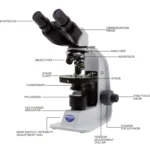O Level Biology 46 Views 1 Answers
Sourav PanLv 9November 3, 2024
Describe a pathogen as a disease-causing organism
Describe a pathogen as a disease-causing organism
Please login to save the post
Please login to submit an answer.
Sourav PanLv 9May 15, 2025
A pathogen is defined as a disease-causing organism that can induce illness in its host. Pathogens are typically microorganisms, which include various types such as viruses, bacteria, fungi, and protozoans. Each type of pathogen has unique characteristics and mechanisms by which they cause disease.
Types of Pathogens
- Viruses:
- Viruses are small infectious agents that require a host cell to replicate. They invade host cells and utilize the cellular machinery to produce more viruses, often leading to cell damage or death. Examples include the influenza virus and the human immunodeficiency virus (HIV).
- Bacteria:
- Bacteria are single-celled organisms that can reproduce independently. While many bacteria are harmless or beneficial, pathogenic bacteria can cause diseases such as tuberculosis, urinary tract infections, and strep throat. They may produce toxins that damage host tissues or disrupt normal bodily functions.
- Fungi:
- Fungi can be unicellular (like yeast) or multicellular (like molds). Some fungi are opportunistic pathogens that can cause infections in individuals with weakened immune systems, leading to conditions such as candidiasis (thrush) or ringworm.
- Protozoa:
- Protozoans are single-celled eukaryotic organisms that can cause diseases like malaria (caused by Plasmodium species) and amoebic dysentery (caused by Entamoeba histolytica). They often spread through contaminated water or food.
- Helminths:
- These are larger multicellular parasites, commonly known as worms, that can live in the host’s body and cause diseases such as schistosomiasis and tapeworm infections.
Mechanism of Pathogenicity
Pathogens can evade the immune response of their hosts, allowing them to reproduce and spread. They often utilize the host’s resources to replicate before exiting the body to infect new hosts. The severity of the disease caused by a pathogen is referred to as its virulence, which can vary widely among different pathogens.
Transmission
Pathogens can spread through various routes:
- Direct Contact: Skin contact or bodily fluids from an infected individual.
- Airborne Particles: Coughing or sneezing can release pathogens into the air.
- Contaminated Surfaces: Touching surfaces contaminated with pathogens.
- Vectors: Organisms like mosquitoes or ticks that carry pathogens from one host to another.
0
0 likes
- Share on Facebook
- Share on Twitter
- Share on LinkedIn
0 found this helpful out of 0 votes
Helpful: 0%
Helpful: 0%
Was this page helpful?




